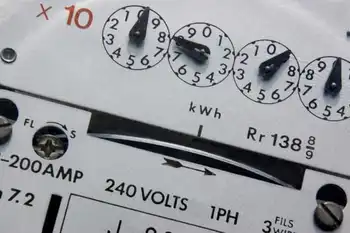Panel presses for national cap-and-trade system
By Globe and Mail
CSA Z462 Arc Flash Training - Electrical Safety Essentials
Our customized live online or in‑person group training can be delivered to your staff at your location.

- Live Online
- 6 hours Instructor-led
- Group Training Available
The report from the National Round Table on the Environment and the Economy also says Ottawa should step in to do away with the patchwork of climate-change rules popping up in various provinces so that business can work with a single, more efficient, national system.
That recommendation comes in the midst of a provincial election campaign in British Columbia, where the future of the province's carbon tax is a central issue.
According to a summary of the report, the panel concludes that while a carbon tax gives business more certainly, a cap-and-trade system is the best way to ensure Canada actually meets the emission targets it has set for 2020 and 2050.
The basic premise behind both a carbon tax and a cap-and-trade system are essentially the same. Both aim to make high-polluting activities — such as driving large SUVs or relying on coal — more expensive.
The difference is that a carbon tax imposes that higher price directly on the consumer as a distinct tax on their gas or heating bill, whereas the cost to the consumer of a cap-and-trade system is usually passed on by businesses.
In the cap-and-trade system proposed by the panel, all businesses would have to buy credits to cover the emissions they produce. If a company's emissions exceed the cap set by government, they would have to buy more credits from companies that came in under the cap. Such a system creates financial incentives for companies to reduce their emissions because they can then avoid having to buy more credits and also be in a position to make money selling their unused emission credits.
To date, Canada's approach — both under the Liberals and the Conservatives — has been to work toward a cap-and-trade system for “heavy final emitters,” which consist primarily of factories and electricity generation. However neither government ever moved the idea beyond the negotiation stage.
The panel proposes a system in which fuel distributors must buy credits to account for the end use of emissions, either through heating costs of homes and buildings or tailpipe emissions.
“Under the proposed policy the Canadian economy, as a whole, would continue to grow under the proposed carbon pricing policy but at a somewhat reduced rate,” the panel says in news release. “Some sectors, regions and Canadians would be impacted more significantly than others but this can be addressed through the design of the proposed policy and auction revenue recycling measures targeted at households and businesses.”
The report also recommends Canadian firms be allowed to purchase credits from other countries with cap-and-trade systems. This option has been strongly opposed by the Conservatives, who have said such purchases do little to reduce emissions at home.
The report forecasts that as a result of implementing such a plan, economic growth would be reduced by between one and two per cent in 2020 and four to six per cent in 2050.
The Conservative government announced a plan called Turning the Corner in 2006 that called for Canada's emissions to decrease 20 per cent by 2020. The new U.S. administration has promised an economy-wide cap-and-trade system in place by 2012. Canada's Environment Minister, Jim Prentice, has said Ottawa's approach is currently under review as the government attempts to align its climate change plan with the United States.
2009 is an important year for setting climate change policy as world leaders are scheduled for a key meeting this December in Copenhagen. There the international community will decide whether to launch a new international climate change regime to extend the Kyoto Protocol, which only applied to emissions from 2008 to 2012.
The Liberal government pledged Canada would reduce Canada's annual emissions to 558.4 megatonnes of greenhouse gases, or six per cent below 1990 levels, during that period.
According to Environment Canada, Canada is on pace to be 29.1 per cent above that target. Canada's emissions have decreased 2.8 per cent between 2003 and 2006, primarily because the electricity mix is shifting away from coal and towards hydro and nuclear power. Warmer winters during those three years also led to reduced demand for heating fuels.











